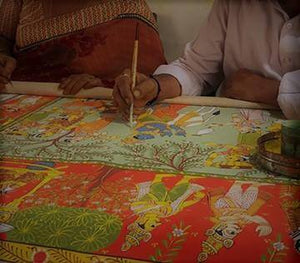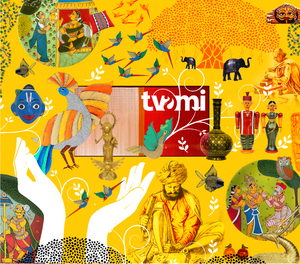
Covid19 – Impact on India’s craft sector and how we can help
The handloom & handicraft industry is the second largest employer in rural India, agriculture being the first. Despite all the hardships faced by artists and weavers today, it has braved the odds and stayed relevant by evolving in subtle and tasteful ways. These ancient crafts are an embodiment of India’s captivating history, culture, traditions, and most importantly, sustainability.
Sadly, this pandemic is pushing their resilience to its limits. With restricted movement of people and goods, shortage or absence of raw materials, excess stockpile – artisans across the country are suffering. Exhibitions organized by the government and privately have all been cancelled. These events are the biggest opportunities for artists and weavers to showcase their products so people can see and get a feel of what they’re buying. In fact, many artists rely only on exhibitions and do not even sell through e-commerce platforms.
With an overall economic slump and the perception that crafts are not an essential commodity, demand for handloom and handcrafted products has plummeted.
While the impact of the virus is universal, it has an even further crushing effect on these artisans. The Export Promotion Council for Handicrafts (EPCH) estimates that the handicraft sector could suffer a setback of ₹8000‐₹10,000 crores. In nearly all conversations with our artisans, they tell us about how this is the worst period they have endured. What is scarier is not knowing when it will all be over.
Tinat, a dhokra artist from Orissa laments, “Usually we go to the market and sell our wares but with this virus scare, we are stuck with stock and no income. The cyclone added to our problems as we do not have a pukka house. The only government support we receive is a few ration staples, but it isn’t enough.” This story echoes in all our conversations with artists, who desperately remind us to help them however we can. Some of them even contemplate leaving for cities to take up construction jobs.
Imagine an India without the dazzling colours of blue pottery and the intricate lines of Gond art? Imagine an India without these resplendent craft skills, some of which can only be inherited, not learnt?
Prime Minister Modi emphasized the need for a self-reliant India with the motto ‘Vocal for Local’. Here is an opportunity to fix the current problems imposed by the pandemic while taking the time to re-examine the craft industry. How can we use design intervention to help languishing crafts by retaining their traditional elements and building in functionality for the modern consumer? What can artists do with their spare time now to grow their skills? How can the virtual space provide an immersive craft experience that compensates for the revenue generated through handicraft exhibitions?
We are at a crucial juncture where our choices can be truly transformative for lakhs of artisans. They have already faced enough challenges due to lack of demand and organized infrastructure. Without our collective efforts and support, they will be forced to abandon their crafts to sustain livelihoods. We risk losing invaluable history and cultural practices.
Now, more than ever, we must choose to buy from small businesses that bring the makers to the forefront. It is imperative to evaluate how we consume and what are the mindful switches we can make. We must find all possible ways to incorporate crafts into our way of life; as things that merely add beauty to our homes, as clothes we wear that commit to comfort and sustainability, as items we use for practical purposes.
This re-thinking at a mass level is the only hope for our artisans.



Leave a comment